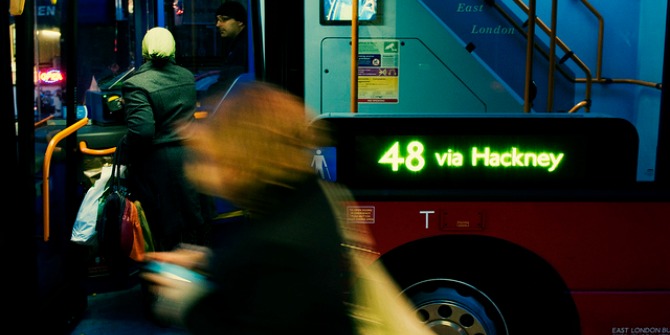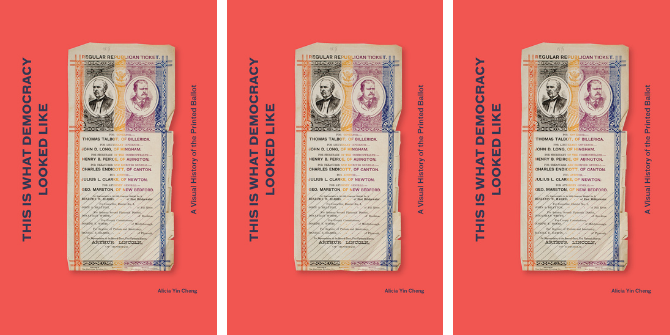Hannah Jones aims to explore how multiculturalism, inequality and belonging are understood in the day-to-day thinking and practices of local government. The rich details of this book, in which interviews and in situ accounts are integrated with a national imperative to engage with and direct the diversification of society, are compelling, and the book should be widely read by academics, policy makers and policy enactors, writes Suzanne Hall.
 Negotiating Cohesion, Inequality and Change: Uncomfortable Positions in Local Government. Hannah Jones. Policy Press. 2014.
Negotiating Cohesion, Inequality and Change: Uncomfortable Positions in Local Government. Hannah Jones. Policy Press. 2014.
How official regulation comes into being is related to the deportment of authority, what Foucault (1978) advanced as governmentality. While Foucault’s emphasis is on the externalised performance of officialdom, Hannah Jones’ important intervention in her book, Negotiating Cohesion, Inequality and Change, is to explore the internalised reflexitivity of ‘policy practitioners’ and their active engagement with policy. In tracing the emergence of the ‘Community Cohesion Policy’ in New Labour’s Britain from 2001, Jones exposes the mental and emotional life of regulation through the extensive personal work invested in by policy practitioners in talking about, feeling, and reflecting on community intervention.
Through Jones’ impressively detailed ethnographic account, the reader is given insight into how the social life of regulation is formed and enacted, in an interpretive as opposed to an impartial process of practising policy. Jones is careful to qualify that forming decisions with an emotional reference does not preclude reasoned decision-making. She sets out this perspective of governmentality within the extensive terrain of the ‘Community Cohesion Policy’ and its broad encompassing of the illusive ideas of community and belonging, on which local authorities were expected to act. ‘Discussion of community cohesion came to mean discussion of race equality, economic inequality, differences in beliefs, discrimination, tolerance and what role public authorities ought to have in each of these realms.’ (pg. 3).
Foucault’s emphasis allows us to see the construction of governmentality through the architectures of auditing problems and defining measures of success, and from the establishment of issues and problems to the administration of solutions (for an excellent account told from the outside, see Asher Ghertner’s article ‘Calculating without numbers: aesthetic governmentality in Delhi’s slums’). Jones’ book is written from the inside and having worked as a policy manager in a local authority in London, her book reveals the more contorted workings of policy; how rules and procedures becomes stretched and reshaped. Across institutions and through a spectrum of rationale, ethics, justifications, and emotions, policy practitioners are enmeshed in frequently uncomfortable processes of testing, interpreting and persuading policy into action, and Jones illuminates ‘the importance of feeling and power in how policy operates’ (p.1).

Jones also engages directly with themes of identity, multiculturalism and extremism, exploring how constructions of race, racism and nationalism enter into the management of community cohesion at different scales and levels of governance. She traces the establishment of the ‘Preventing Violent Extremism’ (PVE) programme in 2007, an initiative developed by Government Offices, but reliant on the involvement of local authorities applying to the PVE Fund. At the time, Jones had the broad remit of responsibility for ‘“inclusion” issues’ at the London Borough of Hackney (p. 60). Colleagues from local authorities – arguably with close-at-hand experience of their local constituents – argued that the PVE has been unjustly constructed as targeting Islam and had unduly focused on Muslim populations. However, civil servants from the Government Offices and Department for Communities and Local Government made clear that all ‘“eligible” authorities were expected to submit proposals to the Fund, and that non-participation would be seen as a sign of not taking seriously the threat of future terrorist action’ (p. 61). Jones records the details and sentiments of an impasse between the local authority, local political leadership and local Muslim organisations in Hackney who were averse to the targeting as Muslims in particular as an extremist threat (and who went on to refuse the PVE offer of funding in 2007/8), and the echelons of the GOL who were insistent on the terms and means for inculcating a PVE on the ground through projects with discernible measures of success.
The construction of a sense of place, as a way of sorting through both the affinities and difficulties that are integral to living or working in an area, is part of the day-to-day engagement of policy practitioners in Hackney. In terms of developing a notion of community cohesion in a place, the policy practitioners in Jones’ interview extracts refer frequently to other places (often places they deem as less successful) as a comparative gauge on an imagined urban Richter scale of community dissonance. Places like Oldham, Dagenham, and Peterborough are evoked to denote what Hackney is not – not suburban, not subjected to large-scale disinvestment in manufacturing, not racist. Practitioners refer to the inadequacy of media stereotypes of place, but also repeat the stereotypes, as well as draw on complex accounts of where ‘community’ prevails or is undermined by community cohesion initiatives. The lack of coherence in these accounts of cohesion in a place (Chapter 5), does not necessarily indicate incoherence in how practitioners understand their areas, but rather suggests the impossibility of the synthetic task of making people in some way cohere through intervention. In the background of the interview excerpts are two narratives: one which indicates the structural brutality that comes with growing inequalities and public and private disinvestments and dispossessions across the UK, against which community cohesion initiatives are no match; and second, that individuals and groups invest in multiple and also divergent allegiances that are always shifting and transforming.
Situated knowledge, ‘that people understand the world in specific ways depending on their experiences and social location’ (p. 114), is the underlying motif of this book on how individuals practice policy under the remit of a central government edict on ‘community cohesion’, in a context of profound inequality and change. The rich details of this book, in which interviews and in situ accounts are integrated with a national imperative to engage with and direct the diversification of society, are compelling, and the book should be widely read by academics, policy makers and policy enactors.
Suzanne Hall is Assistant Professor in the Department of Sociology at the London School of Economics and Political Science.








1 Comments